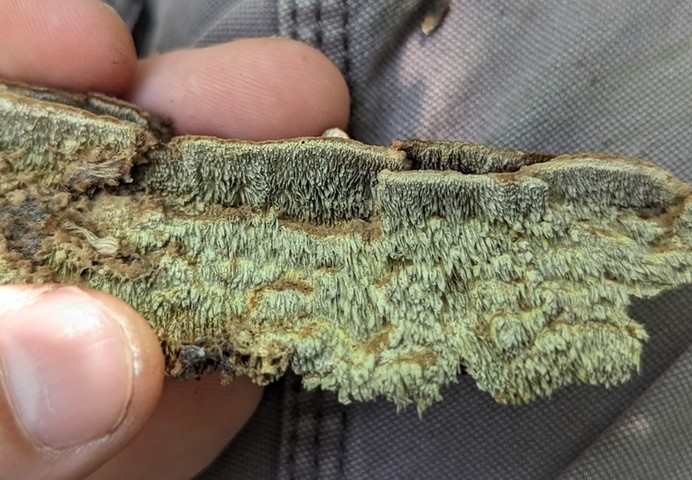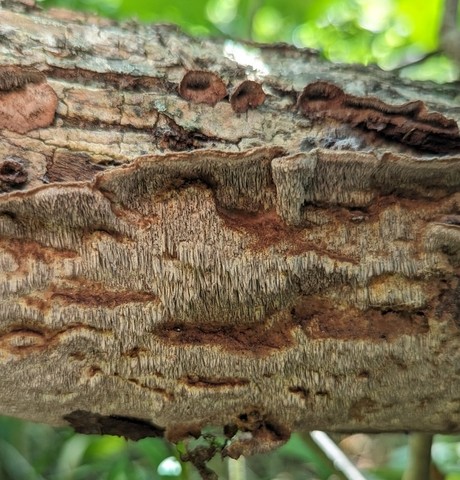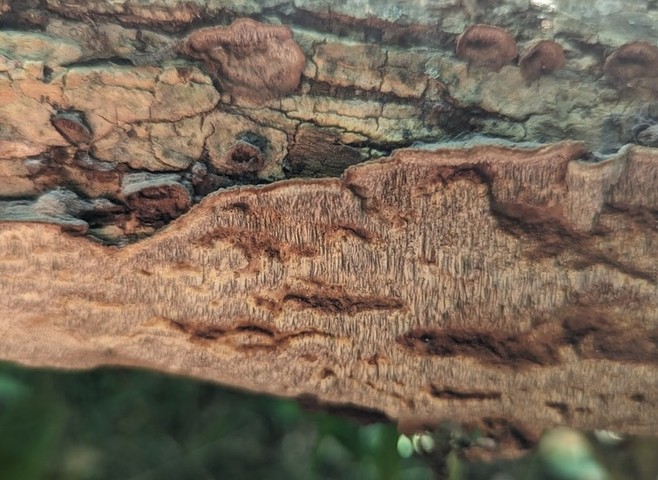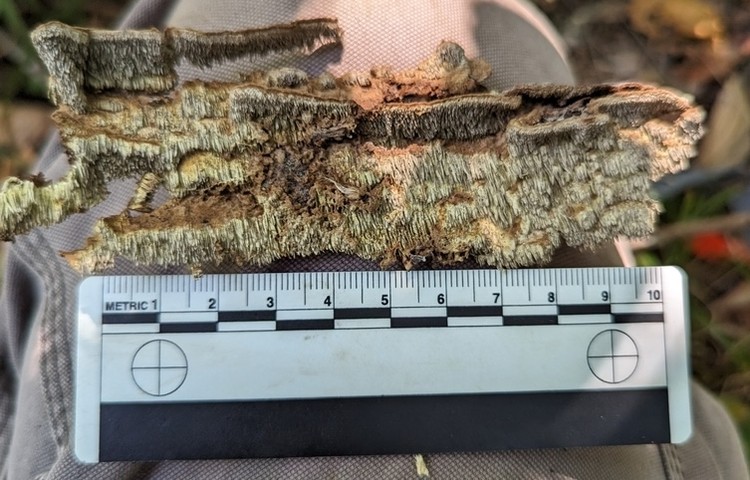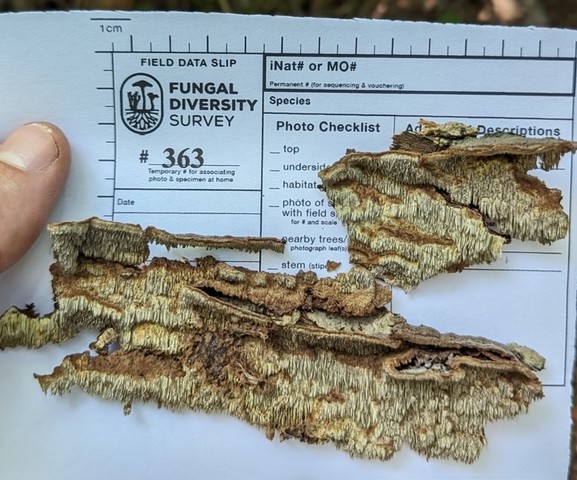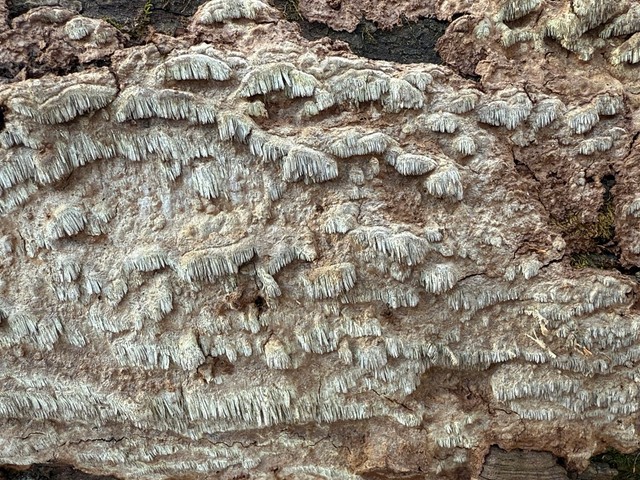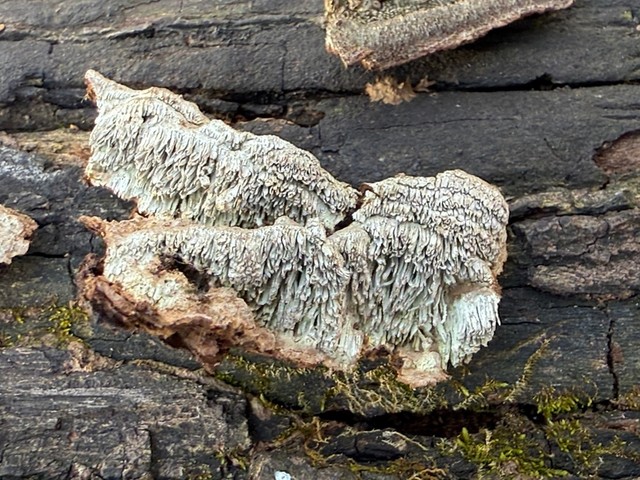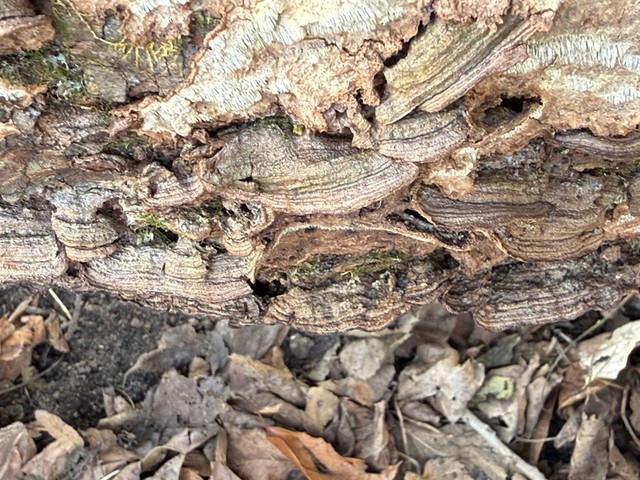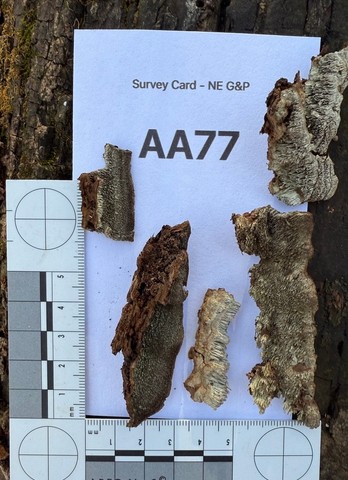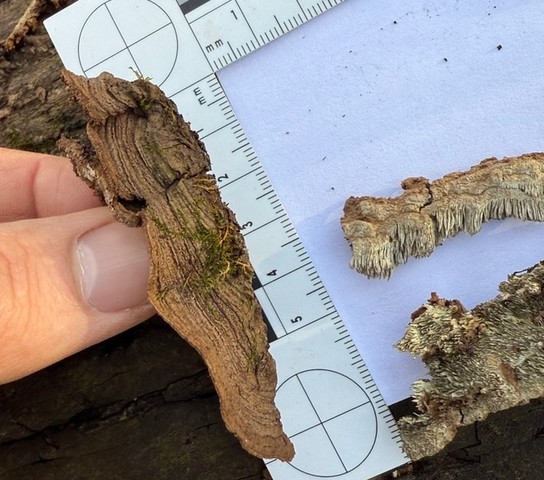Dentocorticium portoricense
Life > Fungi > Basidiomycota > Agaricomycotina > Agaricomycetes > Polyporales > Polyporaceae > Dentocorticium
Description
Dentocorticium portoricense is a wood-decay fungus found at Indian Cave State Park in eastern Nebraska, where it was observed growing on dead American Elm (Ulmus americana) and American Linden (Tilia americana). The species was originally described from Puerto Rico—its name portoricense referring to that origin—and has since been documented across the Americas, including the United States, Mexico, Central America, and Brazil (Ryvarden, 1982).
The fungus forms a flat, crust-like patch on wood, sometimes with edges that curl up into small shelf-like brackets. The upper surface is dark brown and finely hairy, sometimes showing faint zones. The pore surface is pale greenish white when fresh, later turning brown. Pores are shallow and angular, often breaking into maze-like or short tooth-like shapes as the fungus ages (Ryvarden, 1982). A white, powdery coating may be visible when young. Spores are smooth, transparent, and cylindrical, and the spore print is likely white (Liu et al., 2018).
Observations
September 6th, 2023 Indian Cave State Park

#363
-
Growing abundantly on fallen elm log in partially shaded riparian woodland clearing.
-
Cap matte, violet-brown, growing in continuous shelves.
-
Hymenium shelving to resupinate, toothed to labyrinthine. Colored aquamarine and yellow.
Additional Info
- KOH: black on all surfaces.
GTCGTAACAAGGTTTCCGTAGGTGAACCTGCGGAAGGATCATTAACGAGTATCGAAAGGGACTGTAGCTGGCCCCCCCGGGGCATGTGCACGTCCCGCTCATCCACTCTACACCTGTGAACCACCTGTAGGCCAGTCTTCGGCTCGGGGCTTGTCTCCGATGTCCGGGTTGACCTATGTCTCATTACAAACGCTTTGGTATCAGAATGTACGTCGCGATAATACGCATCTTAATACAACTTTCAGCAACGGATCTCTTGGCTCTCGCATCGATGAAGAACGCAGCGAAATGCGATAAGTAATGTGAATTGCAGAATTCAGTGAATCATCGAATCTTTGAACGCACCTTGCGCTCCTGGGTATTCCCAGGAGCATACCTGTTTGAGTGTCATGGAATTCTCAATCCCCTCTCCCTTGCGGTTGTGGGGTTTGGACTTGGAGGTCTTTGCCGGTGCTTATGCACGGGCTCCTCTGGAATGCATTAGCTCGATTCCGTGCGGATCGGCTCCCGGCGTGATAATTGTCTACGTCGTGACCGTGAAGCGTTTGGCGGGCTTCGAACCGTCCCCCCCCGAGGGACAATCGATCTTGACATCTGGCCTCAAATCAGGTAGGACTACCCGCTGAACTTView MycoMap DNA Results
November 21st, 2024 Indian Cave State Park
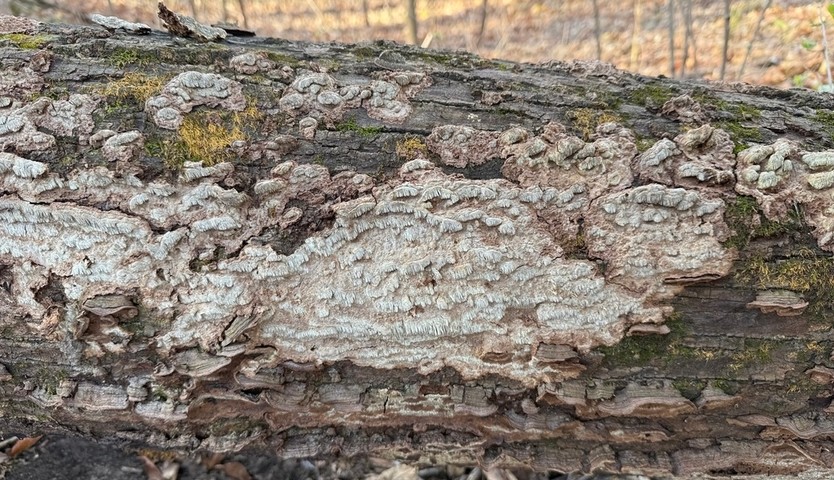
AA77
- Growing resupinate and slightly shelving on fallen American Linden log on North-facing mixed oak/hickory woodland slope.
References
Liu, S.L.; Nakasone, K.K.; Wu, S.H.; He, S.H.; Dai, Y.C. 2018. Taxonomy and phylogeny of Lopharia s.s., Dendrodontia, Dentocorticium and Fuscocerrena (Basidiomycota, Polyporales). MycoKeys. 32:25–48. https://doi.org/10.3897/mycokeys.32.23641
Ryvarden, L. 1982. Fuscocerrena, a new genus in the Polyporaceae. Transactions of the British Mycological Society. 79:279–281. https://doi.org/10.1016/s0007-1536(82)80114-9
Created December 15, 2025 at 10:41 AM
